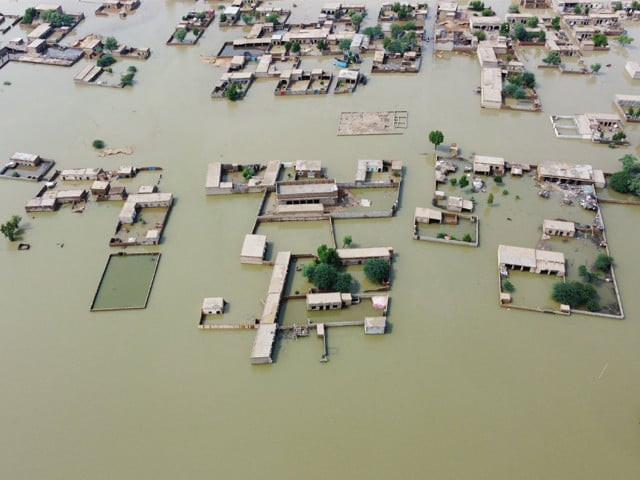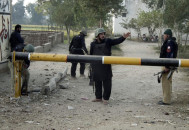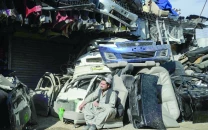SHRC casts doubts on govt flood relief claims
Report says 2022 relief politically influenced and many flood victims never got it

A report of the Sindh Human Rights Commission (SHRC) about the government's response for relief and rehabilitation of the 2022 rain and flood victims has laid to rest the government's tall tales.
"The evacuation and relief processes didn't provide attention to the vulnerable segments of the communities like persons with disabilities, lactating mothers, pregnant women and elderly persons," read the key observations in the 38-page report, authored by Naseer Memon who led the research as well.
The report was circulated to more than a dozen departments of the provincial government on July 10 by the SHRC. "The relief support was politically influenced and many people were not able to receive it," the report underlined.
The 2022 monsoon rains and floods had affected 24 districts in Sindh. The post disaster need assessment (PDNA) put the cost of the losses and damages at a shocking $20.44 billion. As many as 1.415 million houses were razed by the calamity while 642,672 were partially damaged, taking the total figure above 2 million.
Likewise, 752 health facilities of the provincial government received partial damage while 126 others were completely destroyed. According to the report, Rs129.840 billion are supposed to be spent on the rehabilitation of 4,131 flood affected government schools in Sindh. The cost will largely be met by provincial and federal funding besides a Rs7 billion grant from China, Rs3 billion from the EU and Rs1.566 billion from Japan's JICA and the Asian Development Bank's loan.
The report cited unavailability of clean drinking water for the disaster victims as a health hazardous problem during the relief phase. The affected people in that situation had felt compelled to consume polluted water which resulted in ailments.
The menstruating, lactating and pregnant women were particularly put in harm's way. "The [Sindh] Health Department and PPHI [People's Primary Healthcare Initiative] couldn't provide exact data of pregnant women in camps or [about] survival of mothers and their newborns after floods."
Some 386 damaged schools underwent repair while the missing facilities were provided in 11,225 other schools. The rain and flood victims also lost their national identity cards in large numbers. The report pointed out that the limited capacity of the centers of National Database and Registration Authority (NADRA) has been delaying the issuance of new NICs.
Recommendations
The SHRC asked the government to declare education, health, shelter and drinking water as human rights for the disaster hit people. The government has also been advised to figure out weaknesses in its relief and rehabilitation mechanisms to ensure the past mistakes are not repeated again. The flood protection system required complete overhaul while a regular system of monitoring ought to be efficiently put in place.
The report proposed that the government should make public details of its relief operations by cataloguing and sharing the names of the beneficiaries as well. Special attention is needed for the vulnerable people like children, elderly, women and sick people as well as those with disabilities.
The commission asked the government to survey the entire province to check aquifers in which areas are potable and in which areas the water quality showed contamination.



















COMMENTS
Comments are moderated and generally will be posted if they are on-topic and not abusive.
For more information, please see our Comments FAQ